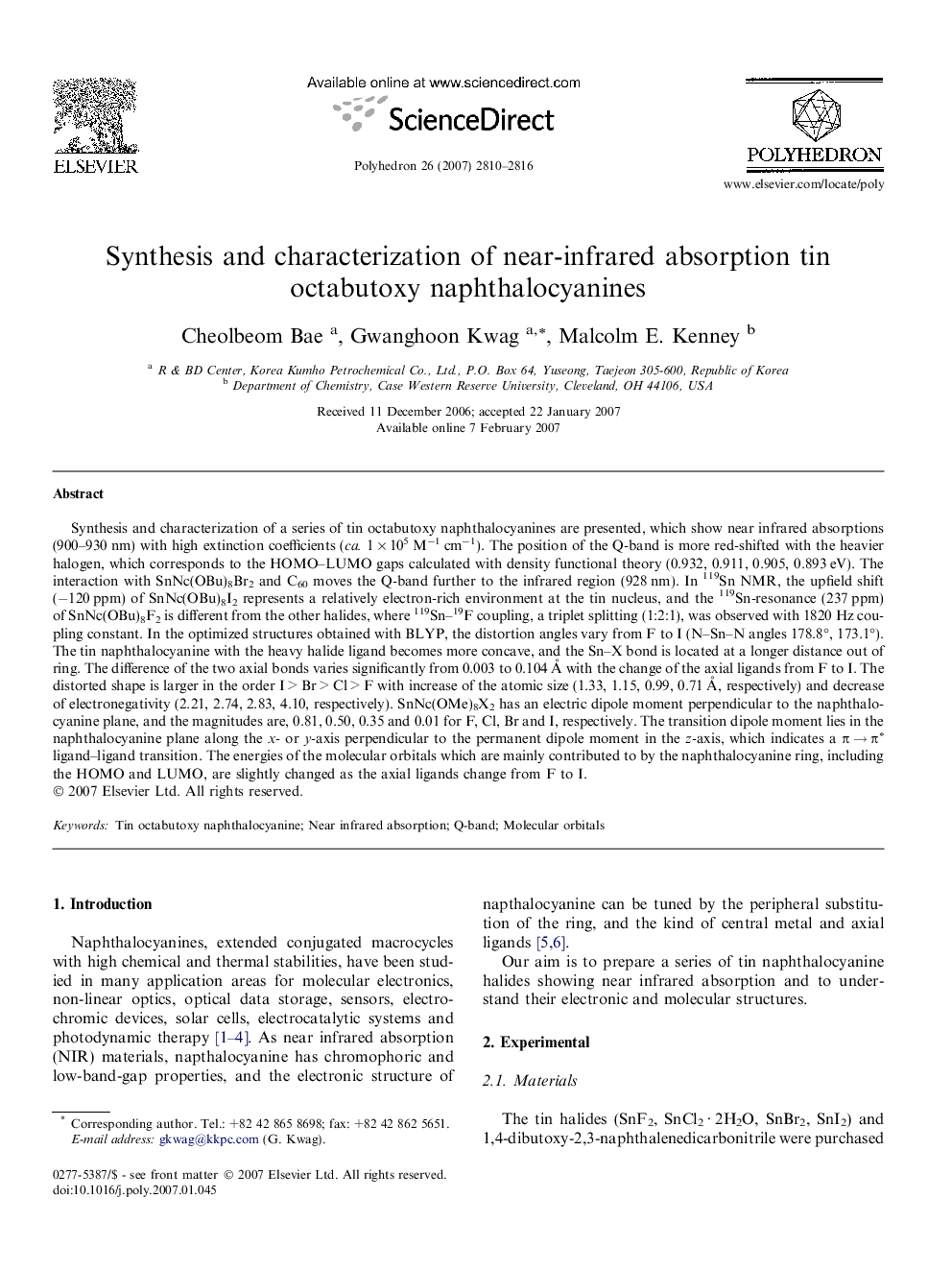| کد مقاله | کد نشریه | سال انتشار | مقاله انگلیسی | نسخه تمام متن |
|---|---|---|---|---|
| 1339841 | 979715 | 2007 | 7 صفحه PDF | دانلود رایگان |

Synthesis and characterization of a series of tin octabutoxy naphthalocyanines are presented, which show near infrared absorptions (900–930 nm) with high extinction coefficients (ca. 1 × 105 M−1 cm−1). The position of the Q-band is more red-shifted with the heavier halogen, which corresponds to the HOMO–LUMO gaps calculated with density functional theory (0.932, 0.911, 0.905, 0.893 eV). The interaction with SnNc(OBu)8Br2 and C60 moves the Q-band further to the infrared region (928 nm). In 119Sn NMR, the upfield shift (−120 ppm) of SnNc(OBu)8I2 represents a relatively electron-rich environment at the tin nucleus, and the 119Sn-resonance (237 ppm) of SnNc(OBu)8F2 is different from the other halides, where 119Sn–19F coupling, a triplet splitting (1:2:1), was observed with 1820 Hz coupling constant. In the optimized structures obtained with BLYP, the distortion angles vary from F to I (N–Sn–N angles 178.8°, 173.1°). The tin naphthalocyanine with the heavy halide ligand becomes more concave, and the Sn–X bond is located at a longer distance out of ring. The difference of the two axial bonds varies significantly from 0.003 to 0.104 Å with the change of the axial ligands from F to I. The distorted shape is larger in the order I > Br > Cl > F with increase of the atomic size (1.33, 1.15, 0.99, 0.71 Å, respectively) and decrease of electronegativity (2.21, 2.74, 2.83, 4.10, respectively). SnNc(OMe)8X2 has an electric dipole moment perpendicular to the naphthalocyanine plane, and the magnitudes are, 0.81, 0.50, 0.35 and 0.01 for F, Cl, Br and I, respectively. The transition dipole moment lies in the naphthalocyanine plane along the x- or y-axis perpendicular to the permanent dipole moment in the z-axis, which indicates a π → π∗ ligand–ligand transition. The energies of the molecular orbitals which are mainly contributed to by the naphthalocyanine ring, including the HOMO and LUMO, are slightly changed as the axial ligands change from F to I.
A series of tin octabutoxy naphthalocyanines is presented, which shows near infrared absorptions (900–930 nm) with a high extinction coefficient (ca. 1 × 105 M−1 cm−1). The position of the Q-band is more shifted the heavier the halogen, which is corresponded to the HOMO–LUMO gaps calculated with density functional theory (0.932, 0.911, 0.905, 0.893 eV).Figure optionsDownload as PowerPoint slide
Journal: Polyhedron - Volume 26, Issue 12, 23 July 2007, Pages 2810–2816